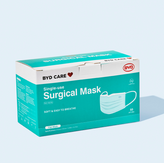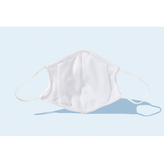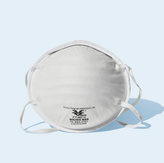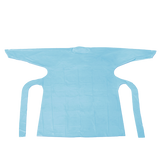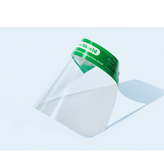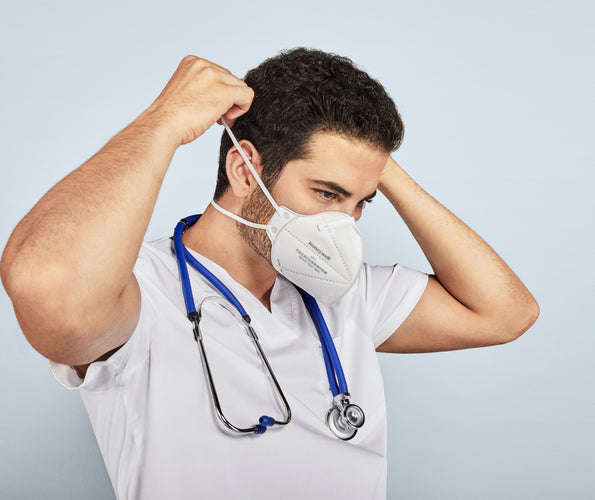Key Takeaways1. We are optimistic that there will be sufficient supply to meet demand this flu season. 2. Hospitals and governments are leagues further now on stockpiling, finding alternative suppliers, and estimating PPE demand - challenges that were relatively new at the start of COVID-19. 3. Domestic supply is ramping but that alone will not meet the demand. Luckily, global suppliers can make up for the deficit. |
The PPE supply chain in the United States has been volatile — to say the least — for the last 6-plus months. In the thick of the COVID-19 onslaught in March and April, acquiring N95 masks at scale was a near-impossible challenge — one that was amply covered in news articles at the time showing doctors and nurses without masks or improvising their own protective gear.
Then, groups like Get Us PPE and our own Operation Masks stepped up to help provide adequate protection for frontline workers. Suppliers rose to the occasion, and now, as we enter autumn and the seventh month of the pandemic, the market has settled somewhat. Can it meet another spike in demand? As flu season arrives, will there be sufficient N95 respirators for our frontline workers?
We say yes!
5 reasons to be optimistic that there will be enough N95s to meet demand this winter:
1. Established distributors have had time to adapt.
Our conversations with distributors make us confident that the folks who need N95s have found sources; now it’s just a matter of getting pricing down to a sustainable level. The VP of supply chain at a major senior care facility put it like this: “It’s not a matter of whether there is supply, it’s just whether people want to pay for it.” As of mid-September, the wholesale price for masks manufactured in China was still around twice the pre-COVID price charged by domestic U.S. producers, but far below peak prices in March. Large medical distributors and group purchasing organizations (GPOs) were in a bad place in April, May, and June, but they used that time to harness existing relationships with PPE-producing factories and develop new ones. At this point, distributors have had 6 months to make adjustments; large distributors with teams overseas managing direct factory relationships are currently stable, while medium-sized and smaller distributors are a mixed bag, with many still filling gaps through the spot supply market.

2. There are new N95 entrants in the market.
A number of global competitors stepped in to fill the U.S. demand gap in the spring when 3M and Honeywell were overwhelmed. More global competitors means more supply, which means more protective coverage for all. It also means a faster return to pre-COVID — or even better — pricing. Manufacturers like Makrite, Innonix Respokare, and Alpha Pro-Tech have picked up market share over the last 6 months; Makrite’s new models have even shown substantial innovation.
3. PPE reuse protocols are now well-established.
Months of summer stockpiling has largely eliminated the need for PPE reuse, but where necessary, reuse protocols that got many hospitals through the early part of the supply drought will continue this winter — now with a few months of experience built in. Moreover, decontamination specialists like Battelle have curated lists of N95s compatible with their machines and re-established helpful reuse programs like its successful partnership with FedEx and Cardinal.
|
Did you know? 80% of the U.S.’s PPE was provided by China before COVID-19 |
4. State stockpiles are in better shape, and states are in better shape for last-minute sourcing.
At the start of the pandemic, desperate states famously were forced to purchase PPE from new sources; many deals were bad, and many others went south. A swarm of state government bids for multi-item PPE packages, including N95s, began in May and extended through early August before waning; at the same time, states began to harness direct relationships with large N95 producers, either domestically or in China. Now governments are making more single-item bids, including for N95s, which hopefully means that overall PPE demand has been largely met with a first wave of bid responders. We suspect there is a lag between reported need and acquisition at the state level, but at a minimum, state COVID response teams now are more seasoned at PPE vendor vetting and have shortlists of suppliers that have already gone through the sometimes-lengthy vendor background check, and who are standing by for when the next shortage hits.
5. Honeywell and 3M are ramping up production.
Demand continues to far outstrip supply for U.S. market favorites (such as the 3M 1860 and 3M 8210), but Honeywell and 3M both have made investment efforts to increase production. It’s unrealistic to expect that these two companies will be able to sufficiently ramp up capacity to meet the entirety of incremental U.S. demand — but they don’t need to on their own!
We are optimistic about supply concerns being more manageable this winter than they were several months ago. There are challenges, among them: the ongoing trade war with China, which provided the U.S. with 80% of our PPE before COVID-19; and raw material shortages, which are a threat to any supply chain. Winter is coming, and with it, flu season — but Aiden Health believes that the experience of the spring has made the PPE supply chain better prepared and battle-tested. We’ll be ready for the next surge in demand.




